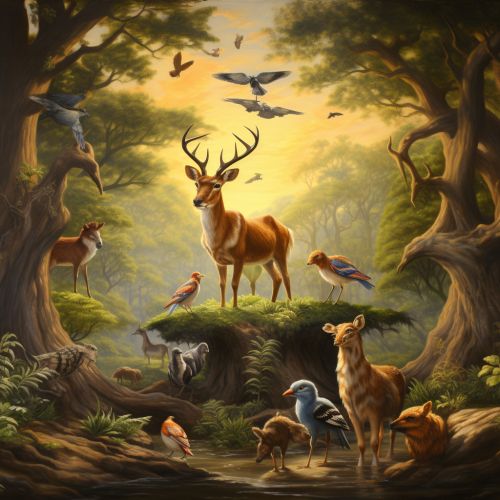The Science of Animal Group Behavior and Swarm Intelligence
Introduction
Animal group behavior refers to the broad range of interactions and coordinated actions that occur between individuals within a group of the same species. This behavior is observed across a wide spectrum of species, from insects such as ants and bees, to birds, fish, and even mammals. The study of these behaviors, particularly in relation to how they can lead to complex and intelligent outcomes, is known as swarm intelligence.


Understanding Animal Group Behavior
Animal group behavior is a fascinating area of study within the field of ethology, which is the scientific study of animal behavior. It involves the examination of social interactions, communication, decision-making, and problem-solving among members of a group. These behaviors can be observed in various contexts, such as foraging for food, defending against predators, and selecting a suitable habitat.
Social Interactions
Social interactions are a fundamental aspect of animal group behavior. They can be cooperative, where individuals work together for mutual benefit, or competitive, where individuals compete for resources. In many species, these interactions are governed by a social hierarchy or dominance hierarchy, which determines access to resources and mating opportunities.
Communication
Communication is another crucial aspect of animal group behavior. Animals communicate using a variety of methods, including visual signals, auditory signals, chemical signals, and tactile signals. The complexity of these communication systems can vary greatly between species, with some exhibiting highly sophisticated forms of communication.
Decision-Making and Problem-Solving
Decision-making and problem-solving are key components of animal group behavior. These processes often involve the collective input of multiple individuals, leading to outcomes that are beneficial for the group as a whole. This is particularly evident in swarm intelligence, where simple rules followed by individuals can lead to complex and intelligent group behavior.
Swarm Intelligence
Swarm intelligence is a concept that originates from the field of artificial intelligence and is used to describe the collective behavior of decentralized, self-organized systems. In the context of animal group behavior, it refers to the ability of a group to exhibit intelligent behavior as a result of individual interactions.
Characteristics of Swarm Intelligence
Swarm intelligence is characterized by several key features. These include decentralization, where there is no central control or leadership; self-organization, where individuals interact based on local information and simple rules; and emergence, where complex and intelligent behavior emerges from these simple interactions.
Examples of Swarm Intelligence
One of the most well-known examples of swarm intelligence is the behavior of ant colonies. Ants are able to find the shortest path to a food source and adapt to changes in the environment by following simple rules and using local information. This behavior is an example of stigmergy, a form of indirect communication where individuals modify the environment, which in turn influences the behavior of other individuals.
Another example of swarm intelligence is the behavior of bird flocks and fish schools. These groups are able to move in a coordinated manner, avoiding predators and navigating their environment, without any central control or leadership. This behavior is an example of self-organization and emergence, key characteristics of swarm intelligence.
Implications and Applications of Swarm Intelligence
The study of animal group behavior and swarm intelligence has important implications for a variety of fields, including biology, ecology, and computer science. It can provide insights into the evolution of social behavior, the dynamics of ecosystems, and the design of artificial intelligence systems.
Biology and Ecology
In biology and ecology, understanding animal group behavior and swarm intelligence can provide insights into the evolution of social behavior. It can help explain why certain behaviors have evolved, how they contribute to the survival and reproduction of individuals, and how they influence the dynamics of ecosystems.
Computer Science and Artificial Intelligence
In computer science and artificial intelligence, swarm intelligence can be used to design algorithms and systems that are capable of solving complex problems. These systems are often inspired by the behavior of animal groups, such as ant colonies, bird flocks, and fish schools. They can be used in a variety of applications, including optimization problems, data mining, and robotics.
Conclusion
The science of animal group behavior and swarm intelligence is a fascinating and complex field of study. It involves the examination of social interactions, communication, decision-making, and problem-solving among members of a group. The study of these behaviors, particularly in relation to how they can lead to complex and intelligent outcomes, has important implications for a variety of fields, including biology, ecology, and computer science.
